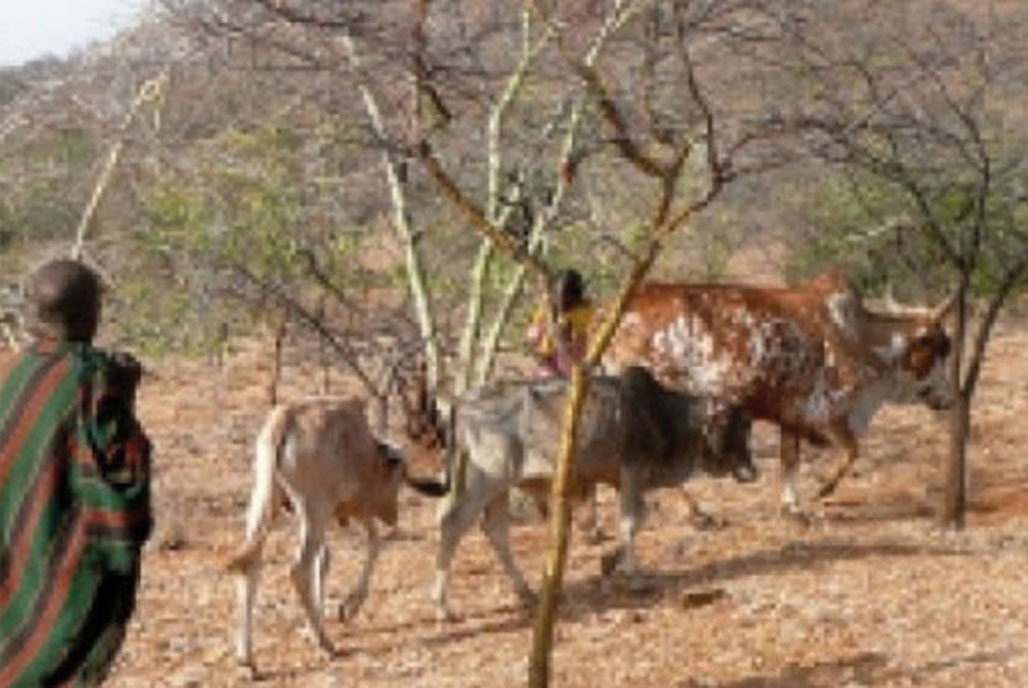It’s crucial to manage water better

A boy grazes cattle in the semi-arid North Eastern Uganda. PHOTO/FILE
What you need to know:
- Radical yet doable shifts are now needed, and unless these happen, local communities and national economies will continue to buckle under the burden of nature’s stress.
It’s now becoming almost impossible to keep track of extreme weather events. Climate change is indeed changing the hydrological cycle at a rapid pace that’s difficult to keep up with, even on social media.
According to a recent workshop held in Kampala discussing regional water shortages and management, many communities are watching their water supply shift and shrink even as excessive water creates havoc.
As severe storm events surge and sea levels rise, and unprecedented floods almost immediately follow drought, humanity is struggling to cope. These shifts are weakening economies and threatening public health, livelihoods and food security. Suddenly it appears no place is safe. Who knows where and when the next climate hit will take place?
Yet, we continue to undermine the security provided by nature with impunity, destroying forests like Kitubulu in Entebbe that was shamelessly fenced off recently, wetlands, streams, rivers, ponds and lakes, rapidly wearing out the shock absorbers that nature provides against weather-related shocks. With the boundaries of nature giving way because of unrestrained extractive and destructive – often avoidable – developments, it makes even more sense now to protect and restore natural ecosystems by managing water responsibly and comprehensively.
Firstly, there is a need to replenish depleting groundwater, which provides nearly half of the water used for irrigation and drinking water for billions of people. Globally, an analysis of some 39 million wells across 40 countries reveals that up to 20 percent of wells worldwide are at risk of running dry and most of them are past sustainability tipping points and correspond to our major food-producing regions.
Groundwater reserves are veritable water banks that also contribute towards stream and river base flows and offer some protection against flooding and water scarcity. Natural recharge zones of rivers can be used to replenish water. The successful cases that dot the Ugandan diverse landscape offer solutions that need now to be scaled up.
Secondly, the health of rivers need to dramatically and drastically improve for securing water and for saving these climate shock absorbers. Sources of rivers need to be protected, rivers need to flow and not be used as dumping grounds for our waste, solid and liquid waste. I was devastated to see River Rwizi in Mbarara looking like that! A river I used to go swimming with friends while at Ntare School is being used as a dumping site.
I’m glad communities around the river are coming forward to clean up the river. River banks must be cleaned, protect catchments, build water conservation structures to revive flow and rebuild people-river connects.
Globally also, efforts are ongoing to improve the health of rivers and communities that reside alongside these rivers. Thirdly, forests need protection and regeneration, since by doing so, we protect water, its availability and its flow. Forests help facilitate and control the water cycle and help reduce water-related risks such as landslides, floods and drought. While more than 100 countries pledged to reverse and halt deforestation by 2030 during COP 26 in Glasgow, the unnerving frequency with which extreme events have occurred around the world in the year 2021 alone begs for immediate action.
Fourthly, urban development needs rethinking. The increasing urban flooding in cities around the world have shown the Achilles heel in urban planning and infrastructure development. Already the urban scenario is such that streets are flooding with increasingly lesser amounts of rainfall.
But this is one side of the story. Extravagant and wasteful urban needs are sucking water from the river such as River Nile and Lake Victoria. Groundwater tables are declining. One major move should be to reduce the planned water demands for urban needs. Freshwater use can be significantly reduced using technologies, reuse of wastewater and storage of storm/rain water for other needs. Reducing urban water needs will help in building up river flows and reducing groundwater extraction.
In urban areas also, groundwater needs to be recharged at maximum possible locations along the storm water drainage systems to prevent flooding due to the overflow from these drains. Provision of lateral mechanical groundwater recharge systems below the built-up areas can help in creating massive groundwater storage. Steps to prevent pollution by these measures must be undertaken.
Planning urbanization in new areas should keep intact the existing drainage channels and urban ponds and lakes. This will help curtail flooding and save water for the lean seasons, thus creating resilience and even lowering the temperatures of the built-up areas in hot climates.
Lastly, policy formulation and action must be based on evidence and ground realities. The Covid-19 pandemic and climate change are but two examples, where evidence to respect nature’s boundaries has been overlooked. Political action around mitigation, adaptation and building resilience as evident in COP 26 at Glasgow this year has not been commensurate with the compelling evidence of the destruction possible by climate change, in spite of thousands of scientists adding their signatures to appeals and massive protests by them.
Radical yet doable shifts are now needed, and unless these happen, local communities and national economies will continue to buckle under the burden of nature’s stress.
Phillip Kimumwe, [email protected]



